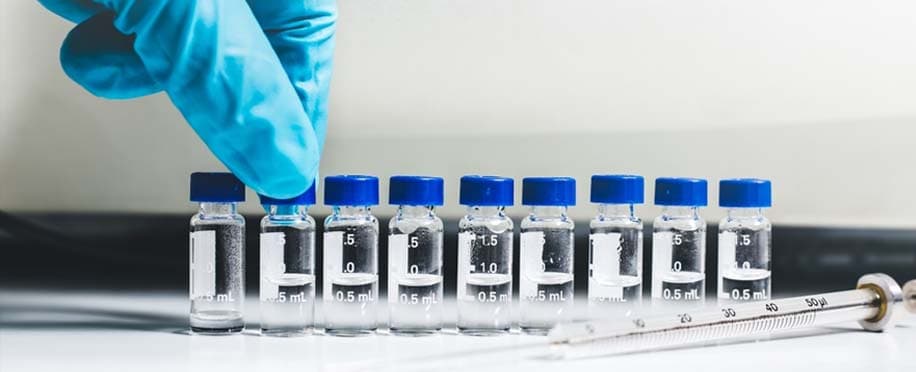Copyright © 2026 lpcentre.com All Rights Reserved. London Premier Centre For Training Ltd Registered in England and Wales, Company Number: 13694538
version: 3.0.1

Posted on : 12/16/2022, 6:25:07 PM
Last Update : 12/23/2023, 7:44:26 PM
You may suspect that you know nothing about liquid chromatography, but you have undoubtedly seen its applications or applied one of them with your own hands during your studies.
Let us ask you a question as an example, have you not yet performed the test of placing a small dot of black ink on a strip of filter paper and dipping it in a solvent solution? Didn't you see how the ink began to move up the paper strip and dissolved to give different colours?
Once you have completed this most common and straightforward liquid chromatography experiment, do not worry because you have remembered what chromatography is. Dear reader, read on to learn more about liquid chromatography and what are the most well-known types and applications.
You may have encountered liquid chromatography if you worked in chemistry or attended oil and gas courses. Liquid chromatography is an analytical technique that separates a sample of a liquid or mixture into its individual, pure components.
The liquid chromatography technique is accurate and occurs due to the sample being exposed to a set of physical or chemical reactions through a device. The sample goes through mobile and stationary phases to reach the final result. In a little while, we will know how this process takes place.
The first known chromatography is traditionally attributed to Russian botanist Mikhail Tswett, at the beginning of the twentieth century, specifically in 1901 AD. Mikhail Tsvet was doing his chlorophyll research using calcium columns. Further development of chromatography occurred when the Nobel Prize was awarded to Archer Martin and Richard Laurence in 1951. They were able to establish the basics of partition chromatography and also develop Plate theory.
It should be noted that chromatography has many other forms. Examples include gas chromatography, thin-layer chromatography, and paper chromatography.
Several types of liquid chromatography differ according to their mechanism of action and the nature of the components of the stationary and mobile phases. Here are the most common types:
This type of chromatography analyses non-polar samples by passing them in a stationary phase of polar nature. It is the most widely used and standard type of liquid chromatography. Within this phase, the lower polarity compounds separate first, and then the more polar compounds. The reason for this process is the non-polar liquid nature of the solvent.
In contrast to the method above. Here the solid stationary phase is non-polar, while the solute in the mobile phase is a polar liquid. As a result of this mixture, the highly polar compounds separate first, then the less polar compounds.
Here pumps are used to inject the fluid through the phases. This results in higher accuracy, speed and sensitivity of the system. This type can be done in both the normal and reverse states of the chromatograph.
All previous chromatography methods rely on the gravitational force to move liquids through the mobile phase. While in this case, an inert gas, such as nitrogen, is used. This accelerates the movement of the fluid in the mobile phase and thus speeds up the separation process. This type of method is the fastest and most expensive.
The stationary phases are usually solid, and the mobile phases are liquid in liquid chromatography, known as adsorption chromatography. On the other hand, partition chromatography uses liquid for both. They are separated based on the different partition coefficients of both types of liquid.
This type of liquid chromatography separates compounds based on the size of their molecules_ known as a molecular sieve. The liquid mobile phase is passed through a solid stationary phase, with more minor compounds stopped along the way by the density of the pores within the stationary phase.
This type aims to separate the sample based on its molecular bonds. Here the mobile phase has a specific metallic bond, while the stationary phase is porous glass. The glass pores capture molecules with bonds and separate them from molecules that do not, known as analytes.
Ion chromatography is classified as high-performance liquid chromatography. This type is for separating ionic compounds, and the separation process depends on the negative and positive ion exchange with a solid stationary phase.

The principle of separation in liquid chromatography is based on an established methodology. Here's what it is in a simple summary:
Once all the components of the sample leave the column, the detector will indicate what each component is. This is usually shown in graph form, known as a chromatogram. The graph consists of a horizontal axis that indicates the retention or retention time of the components and a vertical axis that indicates the strength of the signal, that is, the extent of its concentration.
Each peak in the chromatogram indicates the presence of a chemical in the sample, the type of which is determined by its retention time. Most known chemicals have a typical retention time based on international standards, defined as a peak retention time on the chart.
Through the graph, the volume and concentrations of substances within the sample can be estimated. The dissociated substance's peak height indicates its concentration, i.e. a substance with a high and broad curve is known to contain high concentration.
Industries and applications frequently use liquid chromatography. Includes:
We advise you to enrol in the London Premier Centre on Gas and Liquid Chromatography training course to learn more and sufficient information about this field.